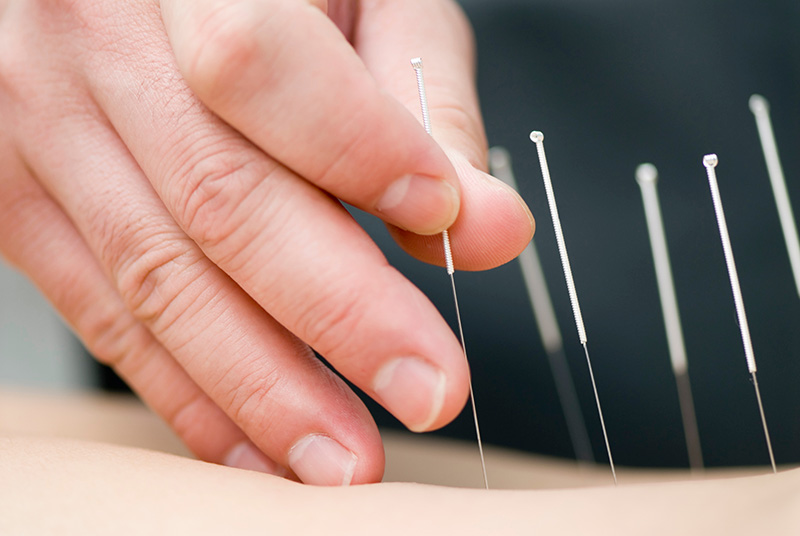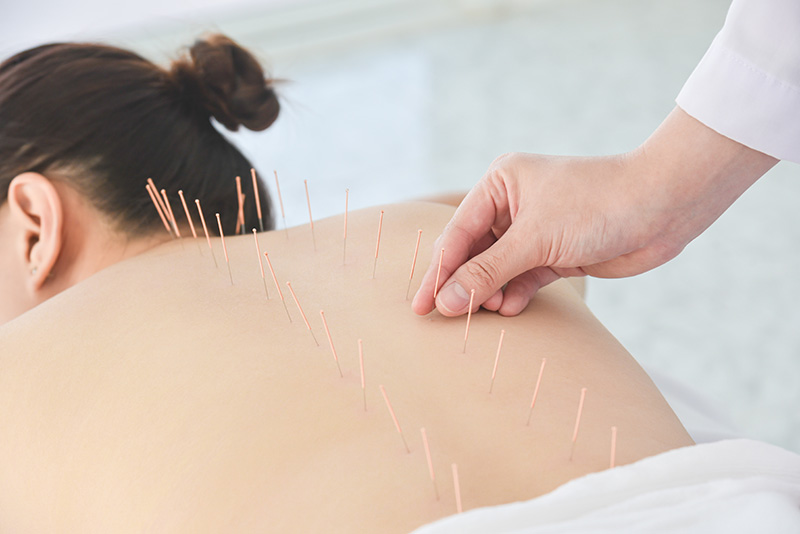
Back pain is a prevalent complaint that affects millions of people worldwide, leading to significant physical discomfort and a reduced quality of life. It can stem from various causes, including muscle strain, herniated discs, arthritis, or even stress. Traditional medical treatments often include medications, physical therapy, and, in severe cases, surgery. However, many individuals are turning to alternative therapies for relief. Among these, acupuncture has gained popularity as an effective treatment for back pain. This article explores how acupuncture works, its benefits, and what to expect from treatment.
Understanding Back Pain
Back pain can be classified into two main categories: acute and chronic. Acute back pain usually occurs suddenly and lasts for a short period, often due to an injury or strain. Chronic back pain, on the other hand, persists for three months or longer and may be due to underlying health conditions.
Common causes of back pain include:
1. Muscle or ligament strain: Heavy lifting or an awkward movement can strain muscles and ligaments in the back.
2. Herniated or bulging discs: Discs act as cushions between the vertebrae, and when they bulge or rupture, they can press on nerves, causing pain.
3. Arthritis: Osteoarthritis can lead to narrowing of the space around the spinal cord, resulting in pain.
4. Skeletal irregularities: Conditions such as scoliosis can cause back pain due to abnormal curvature of the spine.
5. Stress: Emotional stress can lead to muscle tension in the back, contributing to pain.
Back pain not only affects physical health but can also have significant psychological impacts, leading to anxiety, depression, and decreased productivity. Finding effective relief is crucial for maintaining overall well-being.
What is Acupuncture?
 Acupuncture is an ancient practice rooted in Traditional Chinese Medicine (TCM) that dates back thousands of years. It involves the insertion of thin needles into specific points on the body, known as acupuncture points, to stimulate the body’s natural healing processes. The underlying principle of acupuncture is based on the concept of Qi (pronounced “chee”), which is believed to be the vital life force that flows through the body along pathways called meridians.
Acupuncture is an ancient practice rooted in Traditional Chinese Medicine (TCM) that dates back thousands of years. It involves the insertion of thin needles into specific points on the body, known as acupuncture points, to stimulate the body’s natural healing processes. The underlying principle of acupuncture is based on the concept of Qi (pronounced “chee”), which is believed to be the vital life force that flows through the body along pathways called meridians.
In TCM, health is viewed as a balance between Yin and Yang, and any disruption to the flow of Qi can lead to illness, including pain. By inserting needles at specific points, acupuncturists aim to restore balance, improve energy flow, and promote the body’s natural ability to heal itself.
The Science Behind Acupuncture and Pain Relief
Acupuncture has been the subject of numerous studies, and while its practices are rooted in ancient philosophy, modern research has begun to uncover the mechanisms behind its effectiveness for pain relief.
1. Neurotransmitter Release: Acupuncture is thought to stimulate the release of endorphins, the body’s natural painkillers. This can lead to a reduction in pain perception and an overall sense of well-being.
2. Improved Blood Circulation: The insertion of needles can enhance blood flow to the affected areas, promoting healing and reducing inflammation.
3. Regulation of the Nervous System: Acupuncture may help regulate the autonomic nervous system, which controls involuntary bodily functions. This can lead to a decrease in stress levels and muscle tension, both of which contribute to back pain.
4. Modulation of Pain Pathways: Some studies suggest that acupuncture can influence the way pain signals are processed in the brain and spinal cord, potentially altering the perception of pain.
5. Inflammation Reduction: Research indicates that acupuncture may have anti-inflammatory effects, which can be particularly beneficial for conditions like arthritis that contribute to back pain.
How Acupuncture Can Help with Back Pain

Acupuncture can be particularly effective for various types of back pain, including lower back pain, upper back pain, and pain associated with specific conditions such as sciatica or herniated discs. Here’s how acupuncture may help:
1. Targeted Treatment: Acupuncturists identify specific acupuncture points that correspond to the affected areas of the back. For instance, points along the bladder meridian, which runs parallel to the spine, are commonly used to treat back pain.
2. Holistic Approach: Acupuncture treats the body as a whole, addressing not only the physical symptoms but also the emotional and psychological factors that may contribute to back pain. By promoting relaxation and reducing stress, acupuncture can help alleviate tension that exacerbates pain.
3. Personalized Care: Each treatment is tailored to the individual’s specific needs and condition. An acupuncturist will conduct a thorough assessment, including a discussion of symptoms and medical history, to create a personalized treatment plan.
4. Complementary Treatment: Acupuncture can be used alongside other treatments, such as physical therapy and medications, to enhance their effectiveness and provide comprehensive pain relief.
5. Long-term Benefits: Many patients experience long-lasting relief from back pain after a series of acupuncture sessions, reducing their reliance on medications and other interventions.
What to Expect During an Acupuncture Session
If you decide to pursue acupuncture for back pain, here’s what you can generally expect during a session:
1. Initial Consultation: The first visit typically involves an initial assessment where the acupuncturist will ask about your medical history, current symptoms, and lifestyle factors. This information helps the practitioner develop a personalized treatment plan.
2. Treatment Plan: Based on the assessment, the acupuncturist will decide on the appropriate acupuncture points to target and the number of sessions needed. Treatment plans can vary widely depending on the individual’s condition and response to therapy.
3. Needle Insertion: During the session, you will lie down comfortably while the acupuncturist inserts thin needles into the designated points. This process is generally painless, although some individuals may feel a slight pinch or tingling sensation.
4. Session Duration: A typical acupuncture session lasts about 30 to 60 minutes. During this time, you may be encouraged to relax and focus on your breathing.
5. Post-Treatment Care: After the session, you may experience a sense of relaxation and well-being. It’s important to discuss any sensations or reactions you experienced during the treatment with your acupuncturist.
Finding a Qualified Acupuncturist
Selecting a qualified acupuncturist is crucial for ensuring a safe and effective treatment experience. Here are some tips for finding the right practitioner:
1. Check Credentials: Ensure that the acupuncturist is licensed and certified by a recognized board. This typically involves completing a degree in acupuncture and passing national or state exams.
2. Seek Recommendations: Ask friends, family, or healthcare providers for recommendations. Personal experiences can provide valuable insights into the quality of care.
3. Read Reviews: Look for online reviews and testimonials from previous patients. This can help you gauge the acupuncturist’s expertise and patient satisfaction.
4. Schedule a Consultation: Many acupuncturists offer initial consultations where you can discuss your concerns and treatment goals. This meeting can help you determine if you feel comfortable with the practitioner.
5. Trust Your Instincts: It’s essential to choose an acupuncturist with whom you feel comfortable and confident. Trust your instincts when making a decision.
Complementary Therapies to Enhance Acupuncture Benefits

While acupuncture can be highly effective on its own, combining it with other therapies may enhance its benefits. Some complementary approaches include:
1. Physical Therapy: Working with a physical therapist can help strengthen the muscles supporting the back, improve flexibility, and prevent future injuries.
2. Yoga and Stretching: Incorporating gentle yoga or stretching routines can improve overall flexibility and promote relaxation, which can complement acupuncture treatments.
3. Mindfulness and Relaxation Techniques: Practices such as meditation, deep breathing, or progressive muscle relaxation can help reduce stress and tension, further supporting the healing process.
4. Massage Therapy: Combining acupuncture with massage can provide additional relief from muscle tension and enhance overall relaxation.
5. Diet and Nutrition: Maintaining a balanced diet and staying hydrated can support overall health and well-being, aiding in the recovery process.
Potential Side Effects and Considerations
Acupuncture is generally considered safe when performed by a qualified practitioner. However, some individuals may experience mild side effects, including:
1. Bruising or Soreness: Some patients may experience slight bruising or tenderness at the needle insertion sites.
2. Dizziness or Lightheadedness: A small number of individuals may feel lightheaded during or after a session, particularly if they are anxious or have not eaten beforehand.
3. Emotional Release: Acupuncture can sometimes trigger emotional responses

Lee Schwalb is a licensed acupuncturist in New York City with over 20 years of clinical experience, treating a broad range of health issues, from idiopathic pain and acute injuries to stress, anxiety and many other conditions.

